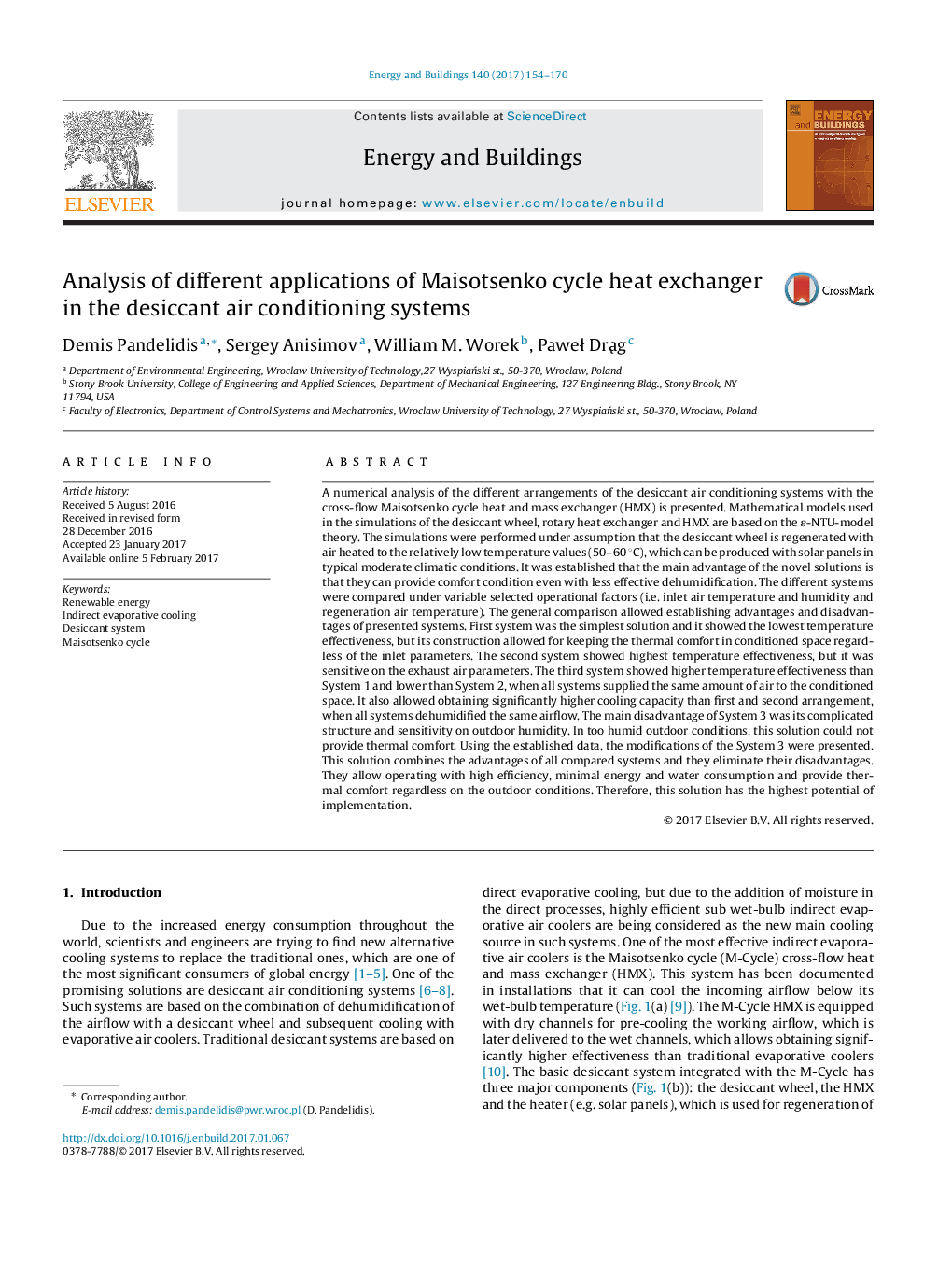| کد مقاله | کد نشریه | سال انتشار | مقاله انگلیسی | نسخه تمام متن |
|---|---|---|---|---|
| 4919263 | 1428950 | 2017 | 17 صفحه PDF | دانلود رایگان |
عنوان انگلیسی مقاله ISI
Analysis of different applications of Maisotsenko cycle heat exchanger in the desiccant air conditioning systems
دانلود مقاله + سفارش ترجمه
دانلود مقاله ISI انگلیسی
رایگان برای ایرانیان
کلمات کلیدی
موضوعات مرتبط
مهندسی و علوم پایه
مهندسی انرژی
انرژی های تجدید پذیر، توسعه پایدار و محیط زیست
پیش نمایش صفحه اول مقاله

چکیده انگلیسی
A numerical analysis of the different arrangements of the desiccant air conditioning systems with the cross-flow Maisotsenko cycle heat and mass exchanger (HMX) is presented. Mathematical models used in the simulations of the desiccant wheel, rotary heat exchanger and HMX are based on the ε-NTU-model theory. The simulations were performed under assumption that the desiccant wheel is regenerated with air heated to the relatively low temperature values (50-60 °C), which can be produced with solar panels in typical moderate climatic conditions. It was established that the main advantage of the novel solutions is that they can provide comfort condition even with less effective dehumidification. The different systems were compared under variable selected operational factors (i.e. inlet air temperature and humidity and regeneration air temperature). The general comparison allowed establishing advantages and disadvantages of presented systems. First system was the simplest solution and it showed the lowest temperature effectiveness, but its construction allowed for keeping the thermal comfort in conditioned space regardless of the inlet parameters. The second system showed highest temperature effectiveness, but it was sensitive on the exhaust air parameters. The third system showed higher temperature effectiveness than System 1 and lower than System 2, when all systems supplied the same amount of air to the conditioned space. It also allowed obtaining significantly higher cooling capacity than first and second arrangement, when all systems dehumidified the same airflow. The main disadvantage of System 3 was its complicated structure and sensitivity on outdoor humidity. In too humid outdoor conditions, this solution could not provide thermal comfort. Using the established data, the modifications of the System 3 were presented. This solution combines the advantages of all compared systems and they eliminate their disadvantages. They allow operating with high efficiency, minimal energy and water consumption and provide thermal comfort regardless on the outdoor conditions. Therefore, this solution has the highest potential of implementation.
ناشر
Database: Elsevier - ScienceDirect (ساینس دایرکت)
Journal: Energy and Buildings - Volume 140, 1 April 2017, Pages 154-170
Journal: Energy and Buildings - Volume 140, 1 April 2017, Pages 154-170
نویسندگان
Demis Pandelidis, Sergey Anisimov, William M. Worek, PaweÅ DrÄ
g,